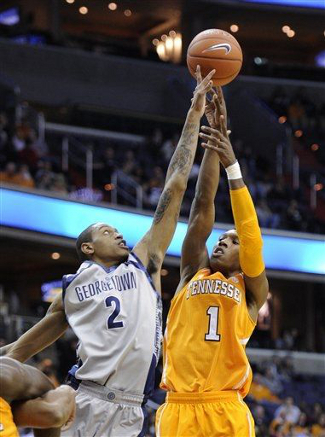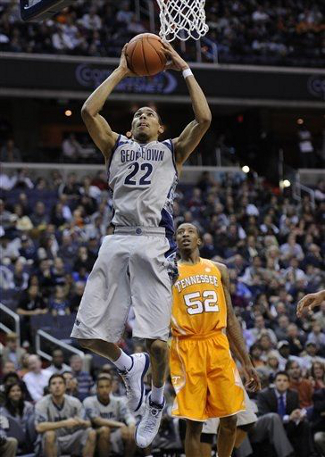Texas Longhorns (5-2) vs. #15/23 Georgetown Hoyas (5-1)
Madison Square Garden | New York, NY | Tip: 6 P.M. CT | TV: ESPN
LRT Consecutive Game #228
Since suffering a shameful loss at the hands of Division II Chaminade on the island of Maui, the Longhorn defense has been downright stingy. After the Silverswords lit up the Texas D for 1.11 points per possession, the team has allowed just .740 points per possession in its last four games, and hasn’t allowed a single opponent to score more than .853 per trip. With their D-II loss not factoring into team statistics, the Longhorns now have the third-most efficient defense in the country, and have the best defensive mark in effective field goal percentage.
While the numbers are dominant, they haven’t come against a gauntlet of juggernauts. Mississippi State, Sam Houston State, and UT-Arlington are all averaging less than .9 points per possession on the season, with Southern Cal’s .95 not much better. Tonight’s game against a very talented and versatile Georgetown team will be the first true test for the Longhorn defense, and is only the beginning of a daunting stretch. Texas faces UCLA, North Carolina, and Michigan State in the next three weeks.
By the numbers
The Hoyas are known for their Princeton sets under Coach John Thompson III, and that patient offensive philosophy leads to some low-possession, low-scoring affairs. Georgetown has an adjusted pace of just 63.5 possessions per game so far this year, a tempo that puts them among the 40 slowest teams in D-I. On Friday night, Georgetown and Tennessee combined a 54-possession game with some terrible shooting to provide a glaucoma-inducing 37-36 final.

Georgetown’s length has frustrated opponents all season
(Photo credit: Nick Wass/Associated Press) 
Otto Porter is expected to have a big season for the Hoyas
(Photo credit: Nick Wass/Associated Press) |










